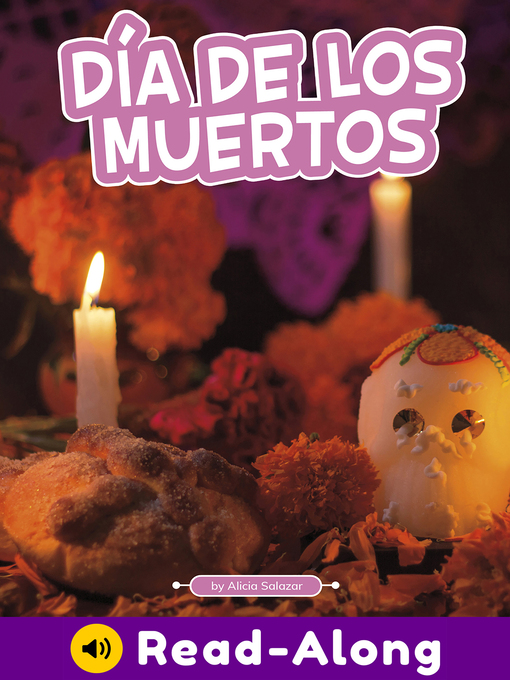WHAT IS DÍA DE LOS MUERTOS?
Maria and her grandmother walk to the cemetery. They live in a town in Mexico. It is November 1. They visit the graves of family members who have passed away. They clean away dirt and leaves from the graves. They add fresh flowers to the graves. In the evening, they join family members for a meal.
They are celebrating Día de los Muertos. In English it means Day of the Dead.
Maria and her family spend the evening together. They might even stay at the cemetery all night. They gather to celebrate the lives of their dead relatives.
Families play music and dance. Young and old also take part in a procession. They carry lit candles and walk through the streets. Some people believe the candles help the spirits of the dead find their way to their families.
Día de los Muertos is two days long. It began in Mexico. Many other Latin American countries also celebrate it. The first day is for remembering children who have passed away. The second day is for remembering adult family members who have died.
People believe that on these two days the spirits of the dead leave the spirit world. The spirits visit their living relatives. The loved ones’ spirits are able to join families in the cemetery or in their homes. They eat and dance together.
WHEN IS DÍA DE LOS MUERTOS?
Día de los Muertos is the first two days of November. It is close to Halloween. But it is not related to Halloween in any way. Some people might dress up as skeletons. The purpose of the holiday is not to dress in costume, though. It is a day to pray and remember lost family members.
The skeletons seen on Día de los Muertos are not meant to be scary. They remind people that the dead are still family even if they are in the spirit world.
Many Mexicans follow the teachings of the Roman Catholic Church. On the Catholic calendar, November 1 is All Saints’ Day. November 2 is All Souls’ Day. All Saints’ Day celebrates saints of the Catholic Church. People pray for the dead on All Souls’ Day.
Many Mexicans also honor traditions from their native heritage. Día de los Muertos mixes Roman Catholic and native traditions. It is common for people to go to church or say a rosary. for Día de los Muertos.
IN MEXICO –
Maria and her grandmother set up an ofrenda at their home. An ofrenda is an altar with photos of loved ones who have died.
People often add food or other things that the person loved to the altar. Maria and her grandmother add lots of flowers to their ofrenda.
Until recently, celebrations in Mexico mostly involved simple family gatherings. Each family would set up an ofrenda. They would go to church to pray. The family would then go to the cemetery to celebrate.
Today’s celebrations have grown bigger. Towns and cities put up decorations. Mexico City has a parade every year. People dress up and dance in the parade. Universidad Nacional Autonoma de Mexico (UNAM) has a large display of ofrendas.
IN THE UNITED STATES –
Mexicans who moved to the United States brought their traditions with them. Día de los Muertos is one of them. In the U.S., people call the holiday the Day of the Dead.
Many Mexican Americans and their children celebrate the way their families did in Mexico. They have an ofrenda, say prayers, and visit the cemetery.
Some Americans who do not have Mexican roots also join in. They might dress up and celebrate with food and music. They remember loved ones who have died.
Comprehension Questions
1. What does "Día de los Muertos" mean in English?
A. Day of the Mexicans
B. Day of the Immigrants
C. Day of the Dead
A. To decorate the home
B. To honor dead loved ones
C. To set up an eating space
Your Thoughts
Vocabulary
4. List any vocabulary words below.

